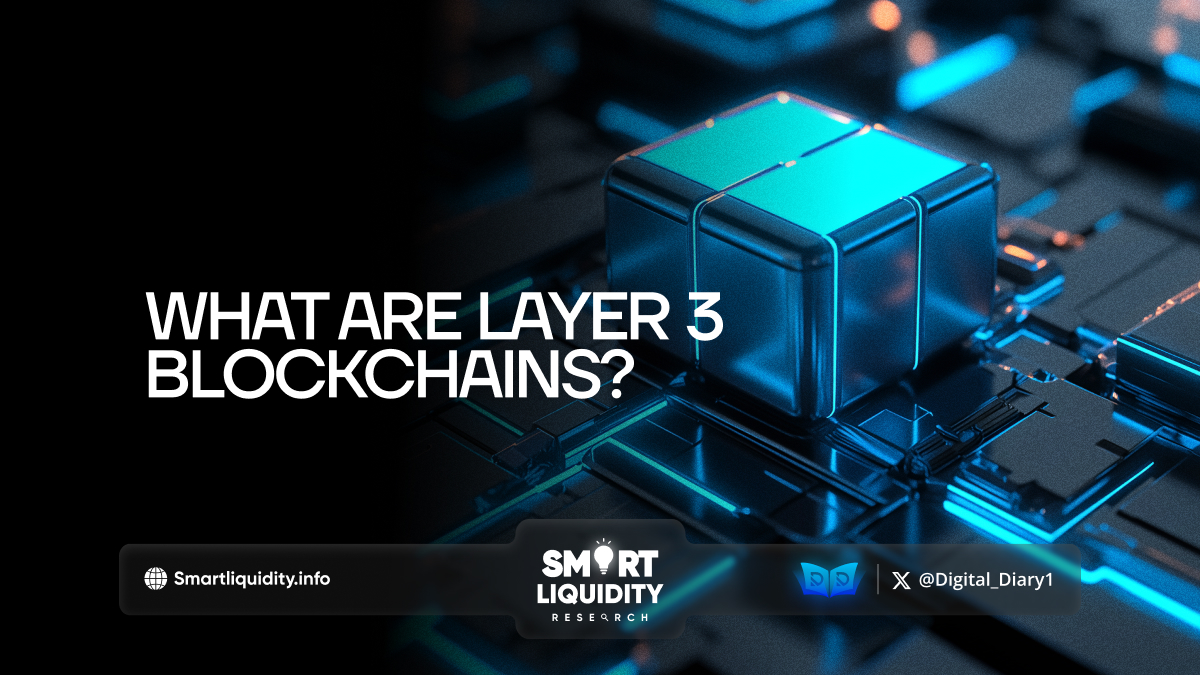What Are Layer 3 Blockchains?


Blockchain technology has been evolving rapidly, and with each new iteration, we see improvements in scalability, efficiency, and functionality. While many are familiar with Layer1 and Layer2 blockchains, the concept of Layer3 blockchains is gaining traction as the next frontier in decentralized technology. But what exactly are Layer3 blockchains, and why are they important?
Understanding Blockchain Layers
Before diving into Layer 3, let’s break down the existing blockchain layers:
- Layer 1: This is the foundational layer, consisting of blockchains like Bitcoin and Ethereum. These blockchains provide security, decentralization, and consensus mechanisms but often face scalability issues.
- Layer 2: These are off-chain or secondary scaling solutions built on top of Layer 1 blockchains. Examples include the Lightning Network for Bitcoin and Optimistic Rollups for Ethereum. They aim to enhance transaction speeds and reduce fees while leveraging Layer 1 security.
Introducing Layer3 Blockchains
Layer3 blockchains are a newer concept designed to optimize blockchain functionality by focusing on specific use cases. They provide an application layer that enables seamless interaction, enhanced customization, and interoperability across multiple blockchain networks.
Unlike Layer 2 solutions, which primarily aim to scale transactions, Layer 3 blockchains focus on specialized application needs such as gaming, decentralized finance (DeFi), and enterprise blockchain solutions.
How Layer3 Blockchains Work
Layer3 acts as a customized environment built on top of Layer 2 solutions. It provides:
- Application-Specific Chains: Instead of a one-size-fits-all approach, Layer 3 blockchains cater to niche markets, optimizing their features for specific industries.
- Interoperability: They allow seamless communication between different blockchain networks, reducing fragmentation in the ecosystem.
- Efficiency & Scalability: By operating independently from Layer 1 and Layer 2 constraints, Layer 3 can offer lower transaction costs and faster processing speeds.
Real-World Use Cases of Layer 3 Blockchains
Layer 3 blockchains are already being explored in various sectors:
- Gaming: Projects like Immutable X leverage Layer 3 to offer gas-free NFT transactions and high-speed gaming experiences.
- DeFi Applications: Custom-built financial solutions with enhanced security and interoperability.
- Enterprise Solutions: Businesses can deploy private Layer 3 blockchains for secure transactions and data integrity.
The Future of Layer3 Blockchains
The emergence of Layer3 blockchains signifies a major leap forward in blockchain architecture. As adoption grows, we can expect:
- Greater efficiency in decentralized applications (dApps)
- More tailored blockchain solutions for industries
- Improved interoperability among blockchains
While still in its early stages, Layer 3 could be the key to unlocking mainstream blockchain adoption by making it more accessible, efficient, and industry-specific.
Final Thoughts
Layer 3 blockchains are paving the way for a more versatile and scalable blockchain ecosystem. They offer tailored solutions that cater to specific industry needs while improving transaction speeds, interoperability, and cost-effectiveness. As blockchain technology continues to evolve, Layer 3 is set to play a pivotal role in defining the future of decentralized applications.
REQUEST AN ARTICLE
Disclaimer: This article is for informational purposes only and does not constitute financial, investment, or technological advice. Readers should conduct their own research before engaging with blockchain projects.




